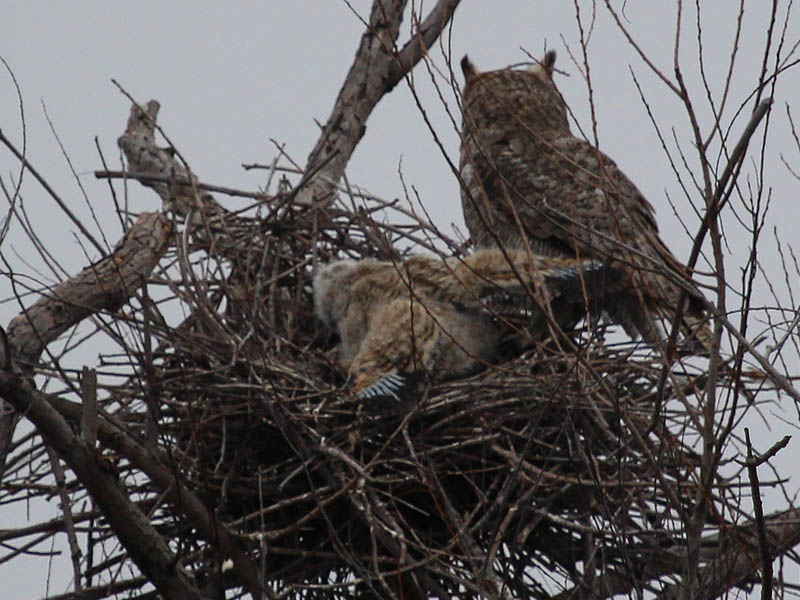NOTE: This observation is a continuation of a previous post. The earlier article can be found here: Great Horned Owl – VCDB Nests Update 4
Other than a brief Turkey Vulture flyby, there was no much going on at the south Great Horned Owl nest today.

The story was significantly different at the north nest. There we found the juvenile owls unattended by the adults. And,as expected, the tilt of this nest gave us an excellent look at it occupants. It looks like we have two healthy owlets at this location.

Great Horned Owls lay their eggs in the dead of winter. This means that they must begin incubating their eggs immediately in order to protect them from the cold. The result is that the owlets hatch over a period of days, and that each member of the brood will be at a distinctly different stage of development at any given moment.
The proof of this can be found in the accompanying photographs. The two owlets are very obviously different in size—one large and one small. The oldest owlet is already showing evidence of flight feather development. I estimate his age to be approximately 4 weeks.
The mother owl returned to the nest while we watched, giving us some insight into the types of interactions that go on between the adult and the young. A sample can be seen in the video below.






NOTE: This observation is continued here: Great Horned Owl – VCDB Nests Update 6
Observation Details
| County | – | Tarrant |
|
| City | – | Arlington | |
| Date | – | Mar 9, 2013 | |
| Time of Day | – | Morning | |
| Temperature | – | Cool (50-69°F/10-21°C) | |
| Weather | – | Overcast | |
| Habitat | – | Water-Bog/Marsh/Swamp | |
| Type of Behavior | – | Care of Young | |
| Gender | – | Mixed | |
| Maturity | – | Mixed | |
| Observer | – | Chris Jackson |






